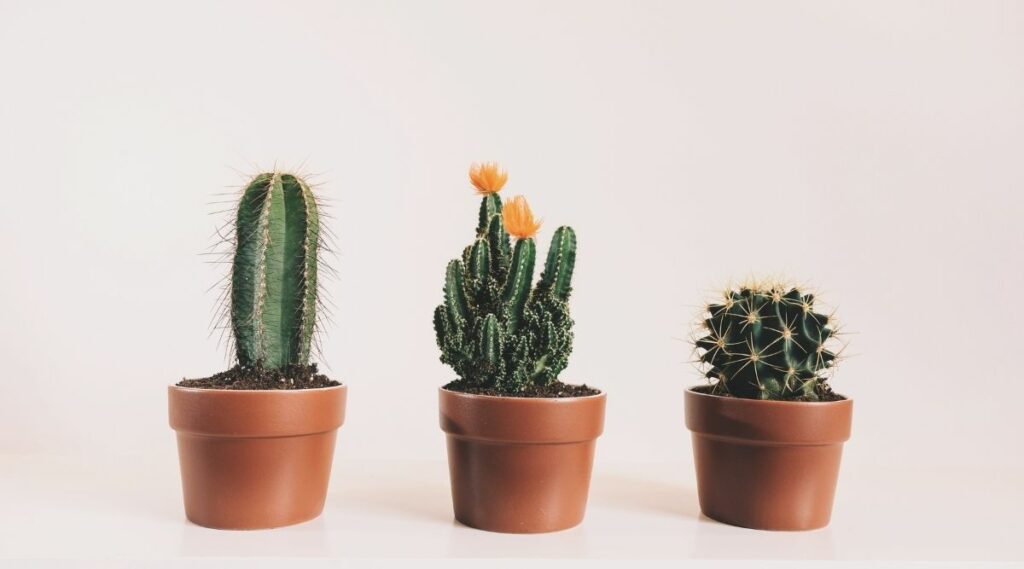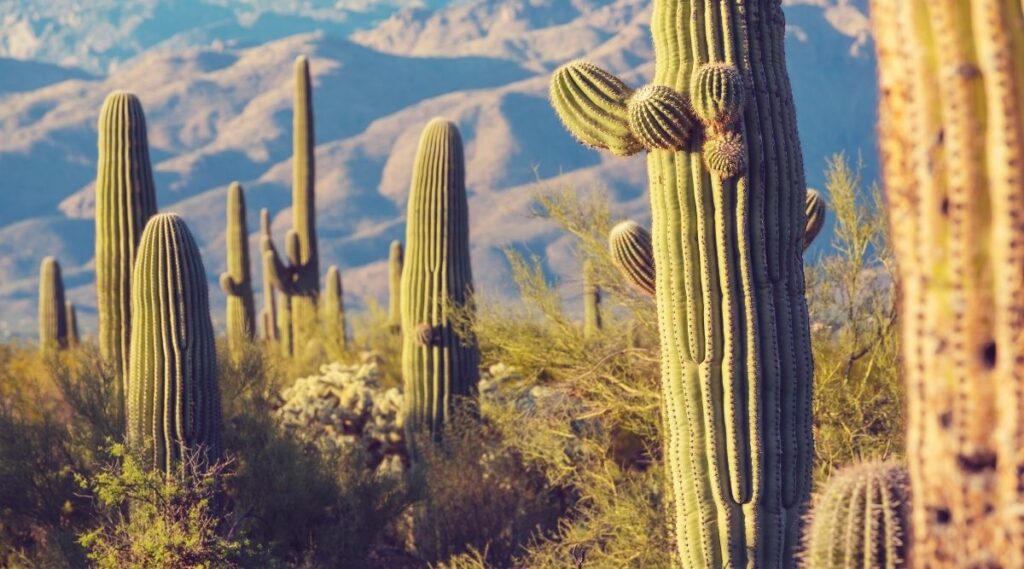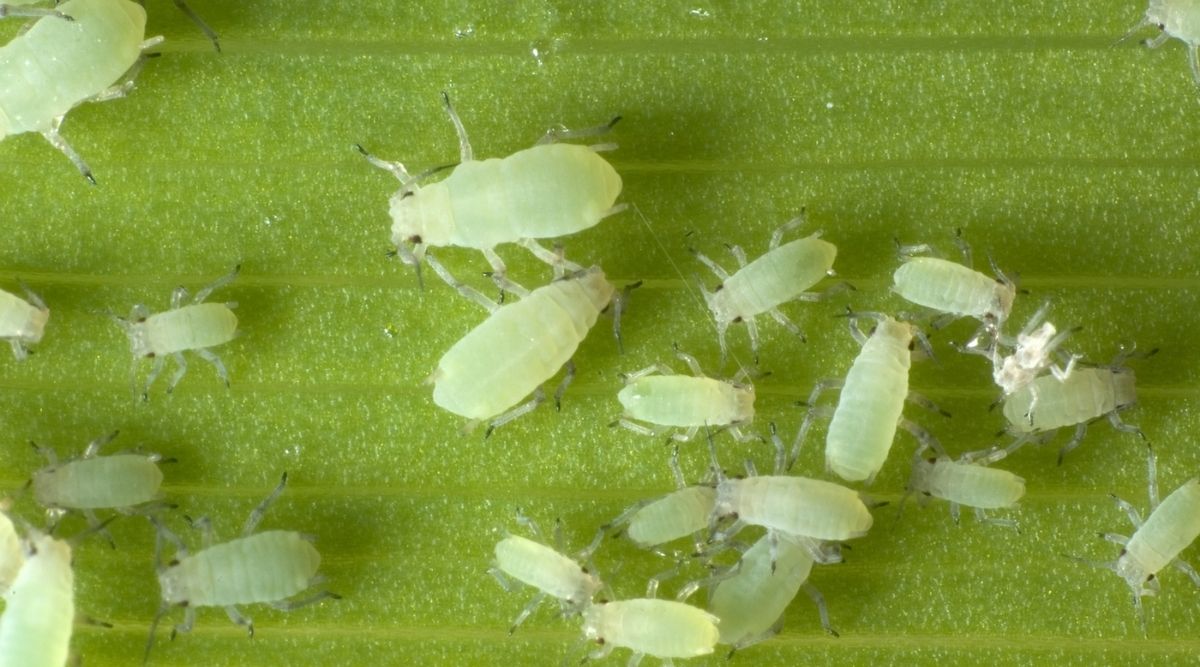Cactus plants are popular plants that can be found in the desert, inside the home, or in the garden. However, their spiky texture can mean they are not the friendliest, especially when it comes to pets and children.
However, you might be wondering if you ever prick yourselves on one of the spikes, is the plant poisonous?
We have written this article to explore the concept further and tell you that cactus plants are usually not poisonous and do not cause major harm. However, there are a few exceptions so keep reading to find out more!

Are Cactus Poisonous?
Cactus plants are not poisonous and the spines do not contain any poison. However, you might experience skin irritation if a spine or a thorn gets lodged in your skin.
If you are pricked by a cactus, you should follow a few simple steps to ensure the wound is treated safely. You should remove the needles or spines with some tweezers in a straight motion so the wound does not increase in size.
However, the needles could get buried deep and this means you need to coax the needles toward the wound’s entry point. To do this, press down on the skin just below the tip of the needle and push upwards toward the wound.
This should move the needle towards the entry point where you can use tweezers to remove it. If the needles have gone deep into the skin, you will need help from a doctor.
After removing the needle, you should clean and disinfect the wound before applying any antibiotic ointment.
Though cacti are generally not poisonous, there are a few expectations to certain species that can cause nasty reactions. We will cover these later on in the article.
Furthermore, it is important to note that cactus water is poisonous to humans as it contains saponin that causes diarrhea and vomiting in humans. It is especially recommended you avoid cactus water if you are pregnant or have any underlying health conditions.
Are Cactus Edible?

Cactus plants in most cases are edible. However, a lot of them do not taste too great and they have been known to cause stomach upset.
If you are worried about a pet or a child eating a cactus, the spikes are usually a good enough deterrent and you should not need to worry too much. Furthermore, if they do end up eating some cactus, the consequences will usually be minimal.
The most common cactus to eat as a particular part of a diet is the prickly pear which is popular in Mexico and the dragon fruit cactus. The prickly pear can be eaten raw, as it has sweet flesh when it is ripe.
The fruit appears on the edges of the flat pads of the cactus and has a similar shape to a pear.
They commonly appear in the mid to late summer through Autumn and range in color from Green to Red. One thing to note is when removing the plant, you should wear gloves as the fruit is covered in glochids.
There are splinters and if they penetrate your skin, they could irritate. To burn the glochids off after removal, simply use an open flame.
If you have dogs at home where you grow prickly pear fruit, be careful with them and ensure you do not allow them to dig them up and eat some as their high toxicity levels can cause vomiting in dogs. It can be lethal, after eating just two pieces.
The dragon fruit cactus is a climbing cactus and produces thick branches with bright red fruit on them to eat. They are easier to harvest than prickly pears and can be picked directly off the plant. People often cut the fruit in half and scoop out the flesh with a spoon.
The Exceptions
As we mentioned at the beginning of the article, although cactus plants are generally not poisonous, there are a few species that are somewhat poisonous as they cause such nasty reactions. These include:
The Peruvian Torch
This can be found in South America and contain alkaloids that cause nausea when ingested. It can also cause hallucinations.
The Saguaro Cactus
This cactus is not poisonous but it has a lot of sharp, pointy spines that can seriously injure humans and pets.
The needles also contain a toxic sap that can cause a nasty skin reaction if it reaches your mouth and eyes. The cactus can grow up to 50 feet tall and is found in Arizona and California.
The Barrel Cactus
This plant contains toxic sap that can irritate the skin. It also has very sharp needles to protect itself from predators.
The Cholla Cactus
The Cholla Cactus shoots needles and contains the same toxins as the Barrel Cactus.
The San Pedro Cactus
This grows in Mexico, South America, and Central America and is used in the production and distribution of cocaine. The plant contains mescaline so can cause hallucinations or delusions if ingested by humans.
Peyote Cactus
This plant is used in Native American rituals and is known as the ‘flesh of God’ as it also contains mescaline which can cause powerful hallucinations.
Euphorbias
We cannot talk about poisonous cacti without mentioning Euphorbias. These are succulents that look like cacti but they are not and they contain cyasin, a poisonous chemical that causes vomiting and diarrhea.
Moreover, all euphorbia plants contain a milky white sap and this is highly alkaline which could cause burns if found on the skin or in the eyes.
Final Thoughts
We hope after reading this article you have gained a better understanding of the cactus plant and feel at ease about their low risk of harm.
They are generally not poisonous plants, but you should still keep an eye out for certain species we have listed that could cause nasty reactions to humans.
If you ever want to check whether you have a poisonous euphorbia or a cactus plant, make an incision in the plant to check for white sap. Now go buy that little house cactus you’ve had your eye on and give it a little home, just be careful not to prick yourself!
- Best Hanging Plant For Low Light - September 4, 2023
- Best Indoor Plants Florida - August 28, 2023
- Best Plants For Bathroom Smells - August 21, 2023








